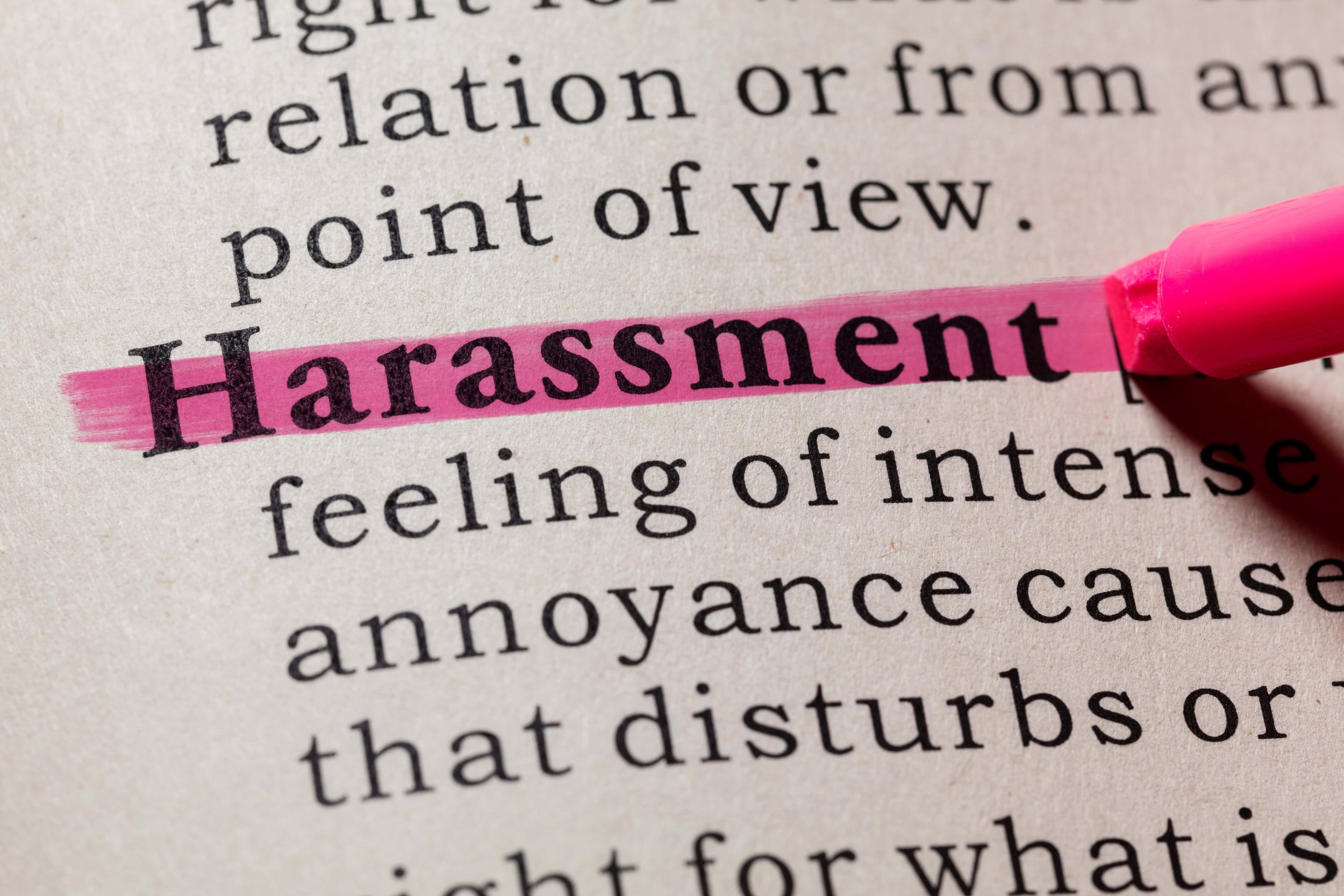
HARASSMENT in the WORKPLACE
SEXUAL HARASSMENT
Sexual harassment can be between individuals of the opposite gender or the same gender. It generally falls into two categories: quid pro quo and hostile work environment.
In a quid pro quo situation, a manager usually propositions a subordinate with a reward for engaging in the desired conduct and a punishment for not. The classic example is a supervisor promising a subordinate a raise or promotion for a sexual relationship while threatening a demotion or termination if the subordinate does not participate.
In a hostile environment situation, the victim is often bombarded with comments of a sexual nature, touched against his/her will, given ongoing propositions for a sexual or romantic activity or comments about appearance, manner of dress or perceived sexual activity with others.
Both forms of sexual harassment are unlawful and, when between a supervisor and subordinate, subject the employer to possibly being sued.
When sexual harassment occurs between coworkers, the standards change. An employee who feels sexually harassed must report the harassment to management. If management takes corrective action and ends the harassment, the employee may not have a claim. However, if management allows the harassment to continue, they may be liable to be sued. It is the employer’s duty to protect victims of sexual harassment from the harassers.
If you are being sexually harassed by a co-worker, it is important you make the complaint to management in writing and keep a copy of your written complaint.
If you feel you have been a victim of sexual harassment, contact Stokar Law for a FREE consultation to discuss your rights and options.
